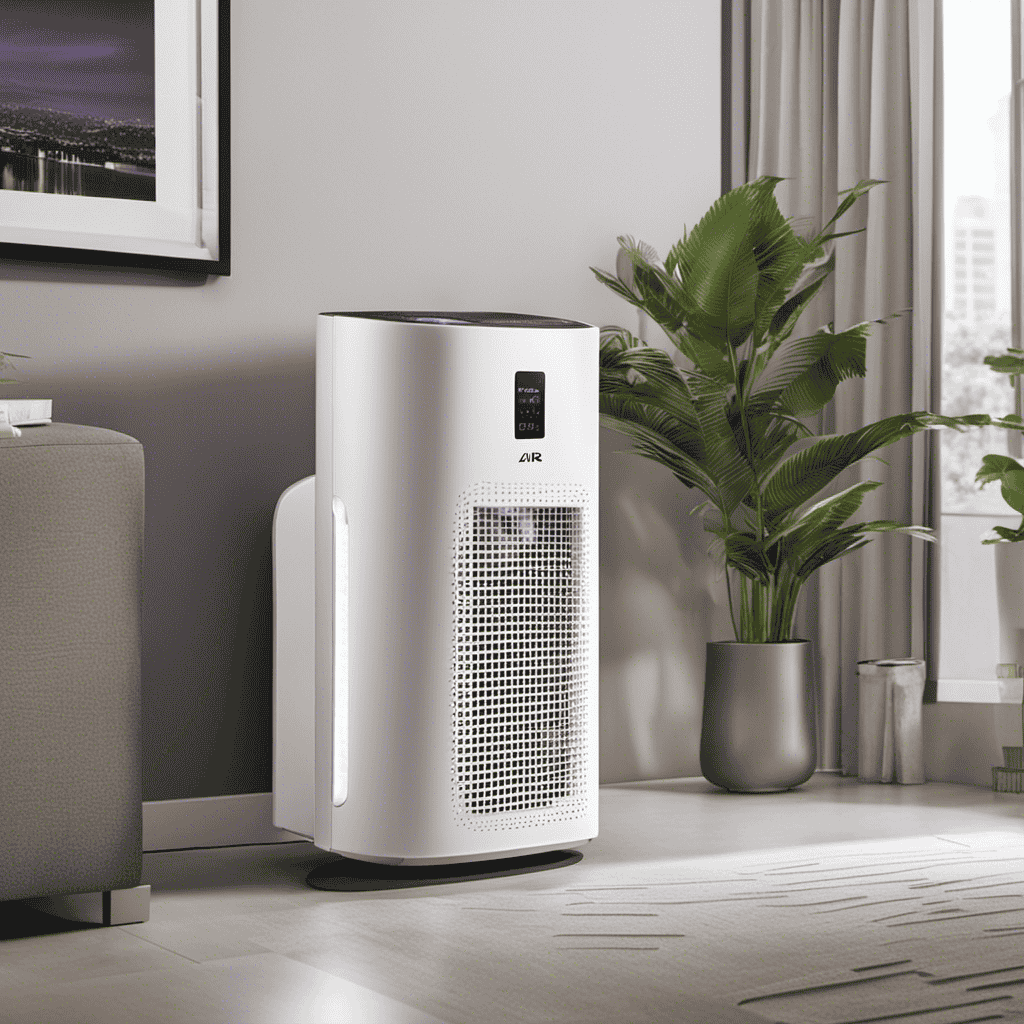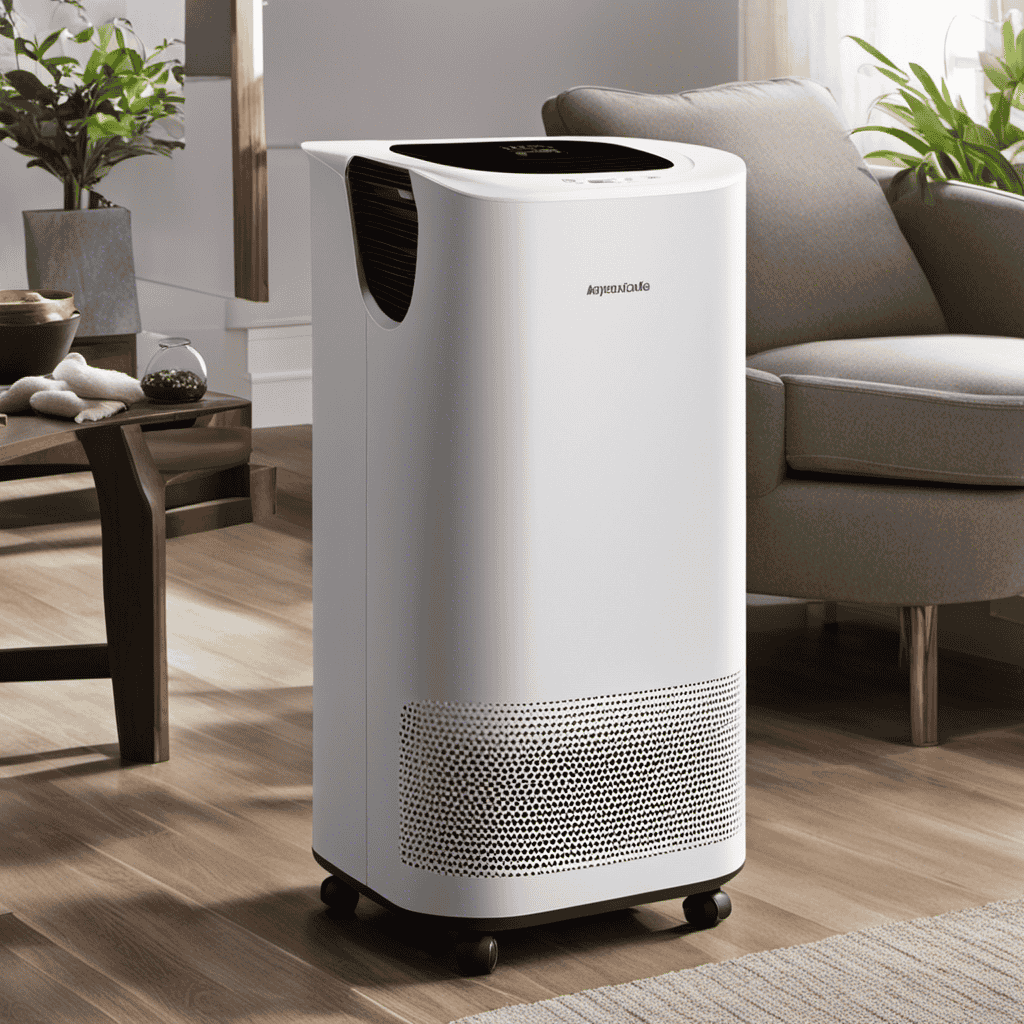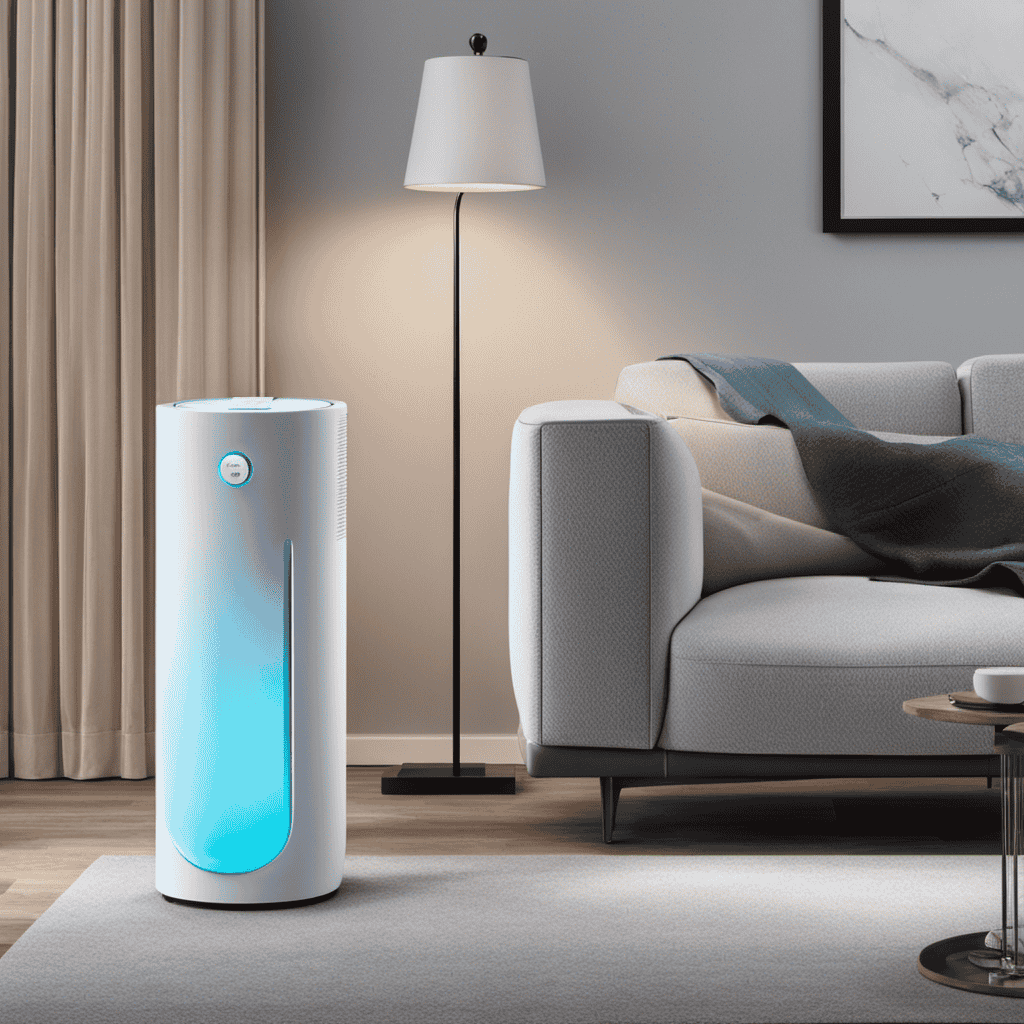Were you aware that the digits displayed on an air purifier reveal much about its efficiency? Grasping the significance of these numbers could assist you in making a well-informed choice while selecting the most suitable air purifier for your requirements.
From the CADR rating, which measures how quickly the purifier can clean the air, to the ACH, which indicates how many times the air in a room can be filtered per hour, each number provides valuable information.
In this article, I will break down these numbers and explain what they mean for your air quality.
Key Takeaways
- CADR ratings measure air filtration effectiveness and consist of three numbers: tobacco smoke, dust, and pollen.
- ACH ratings determine air circulation and filtration efficiency, indicating the number of air exchanges per hour.
- Particle size is measured in microns, with pollen ranging from 10-100 microns, dust ranging from 0.5-5 microns, and viruses ranging from 0.005-0.3 microns.
- Noise level, measured in decibels, is important to evaluate, and models with lower decibel outputs are preferred.
Understanding the CADR Rating
To understand the CADR rating, you’ll need to know what each number represents. This rating is a way of measuring air filtration effectiveness and comparing air purifier performance.
CADR stands for Clean Air Delivery Rate, and it measures how efficiently an air purifier can remove pollutants from the air. The CADR rating consists of three numbers: one for tobacco smoke, one for dust, and one for pollen.
Each number represents the volume of air that the purifier can clean in a specific amount of time. The higher the CADR rating, the faster the purifier can remove these particles from the air.
Decoding the Air Change Per Hour (ACH
Understanding the ACH rating helps you determine how efficiently your air purifier circulates and filters the air in your space. This rating refers to the number of times an air purifier can exchange the air in a room per hour.
To calculate the room size requirement, you need to consider the ACH rating in relation to the volume of your space. The higher the ACH rating, the better the air purifier can remove pollutants and allergens from the air.
To determine the filtration effectiveness, you can use the ACH rating as a guide. A higher ACH rating means that the air purifier is more effective at removing particles from the air.
Interpreting the Particle Size and Microns
The ACH rating of an air purifier determines how efficiently it circulates and filters the air. But what about the particle filtration aspect? When it comes to air quality measurement, understanding particle size and microns is crucial. Particle size refers to the diameter of the particles in the air, while microns measure the size in micrometers. To give you a better idea, here’s a table that illustrates the different particle sizes and their corresponding microns:
| Particle Size | Microns |
|---|---|
| Pollen | 10-100 |
| Dust | 0.5-5 |
| Bacteria | 0.3-10 |
| Viruses | 0.005-0.3 |
Analyzing the noise level in decibels (db) is another important factor to consider when choosing an air purifier. As we delve into this topic, let’s explore how noise levels impact the overall user experience and the importance of finding a balance between air purification and noise reduction.
Analyzing the Noise Level in Db
When it comes to choosing an air purifier, analyzing the noise level in dB is an important factor to consider. The noise level of an air purifier is measured in decibels (dB), and it indicates how loud the purifier will be when operating.
To analyze the noise level effectively, it is crucial to evaluate the decibel output of the air purifier. Here are three key points to consider when analyzing the noise level:
-
Airflow Capacity: One should assess the airflow capacity of the air purifier as it directly affects the noise level. Higher airflow capacity often results in a louder purifier.
-
Decibel Output: It is essential to evaluate the decibel output of the air purifier to determine how loud it will be during operation. Look for models with lower decibel outputs for quieter performance.
-
Comparing Options: When considering different air purifiers, comparing the noise levels in dB can help in selecting the one that aligns with personal preferences for noise levels.
Examining the Energy Efficiency Ratio (EER)
Examining the energy efficiency ratio (EER) helps determine the air purifier’s energy consumption and its effectiveness in providing clean air. The EER is a measurement of the air purifier’s energy efficiency and is calculated by dividing the clean air delivery rate (CADR) by the power consumption. A higher EER indicates a more efficient air purifier that consumes less energy while still delivering clean air. To give you a better understanding, here is a table showcasing the EER and performance analysis of three different air purifiers:
| Air Purifier Model | EER | Energy Consumption | Performance Analysis |
|---|---|---|---|
| Model A | 9.5 | Low | Excellent |
| Model B | 8.2 | Medium | Good |
| Model C | 7.0 | High | Average |
As you can see, Model A has the highest EER, indicating the highest energy efficiency and excellent performance. On the other hand, Model C has the lowest EER, indicating lower energy efficiency and average performance. By examining the EER, you can make an informed decision about an air purifier’s energy consumption and performance.
What Do the Numbers on an Air Purifier Signify in General?
When it comes to understanding the Dyson air purifier numbers meaning, it’s important to know that each number signifies a different aspect of the purifier. The first number typically represents the size of the room it can effectively purify, while the second number indicates the level of air filtration efficiency.
Frequently Asked Questions
How Do I Determine the Appropriate Size of an Air Purifier for My Room?
To determine the appropriate size of an air purifier for my room, I consider the square footage and the CADR (Clean Air Delivery Rate) of the purifier. This ensures efficient air purification.
Can an Air Purifier Remove Odors From My Home?
Yes, an air purifier can remove odors from your home. It is important to choose an air purifier with a high level of effectiveness in odor removal. Regular air purifier maintenance will ensure optimal performance.
Are There Any Health Risks Associated With Using an Air Purifier?
Using an air purifier has many health benefits, but it’s important to understand its effectiveness. There are potential risks associated with certain types of air purifiers, so it’s crucial to do your research before making a purchase.
How Often Do I Need to Replace the Filters in an Air Purifier?
The filter lifespan and maintenance schedule for an air purifier depend on several factors, such as the model and usage. It’s important to refer to the manufacturer’s instructions for specific guidelines on filter replacement.
Can an Air Purifier Help With Seasonal Allergies?
Yes, an air purifier can help with seasonal allergies. It effectively removes allergens like pollen and dust from the air, reducing symptoms and providing relief. Using one has many benefits for allergy sufferers.
Conclusion
In conclusion, understanding the numbers on an air purifier is crucial for making an informed decision. The CADR rating provides insight into the unit’s ability to remove airborne particles, while the ACH reveals how many times the air in a room is purified per hour.
The particle size and microns indicate the purifier’s effectiveness in capturing specific pollutants. Noise level in dB helps determine if the purifier is suitable for quiet spaces. Lastly, the EER showcases the energy efficiency of the device.
So, next time you’re in the market for an air purifier, remember to decode those numbers and find the perfect one for your needs.










